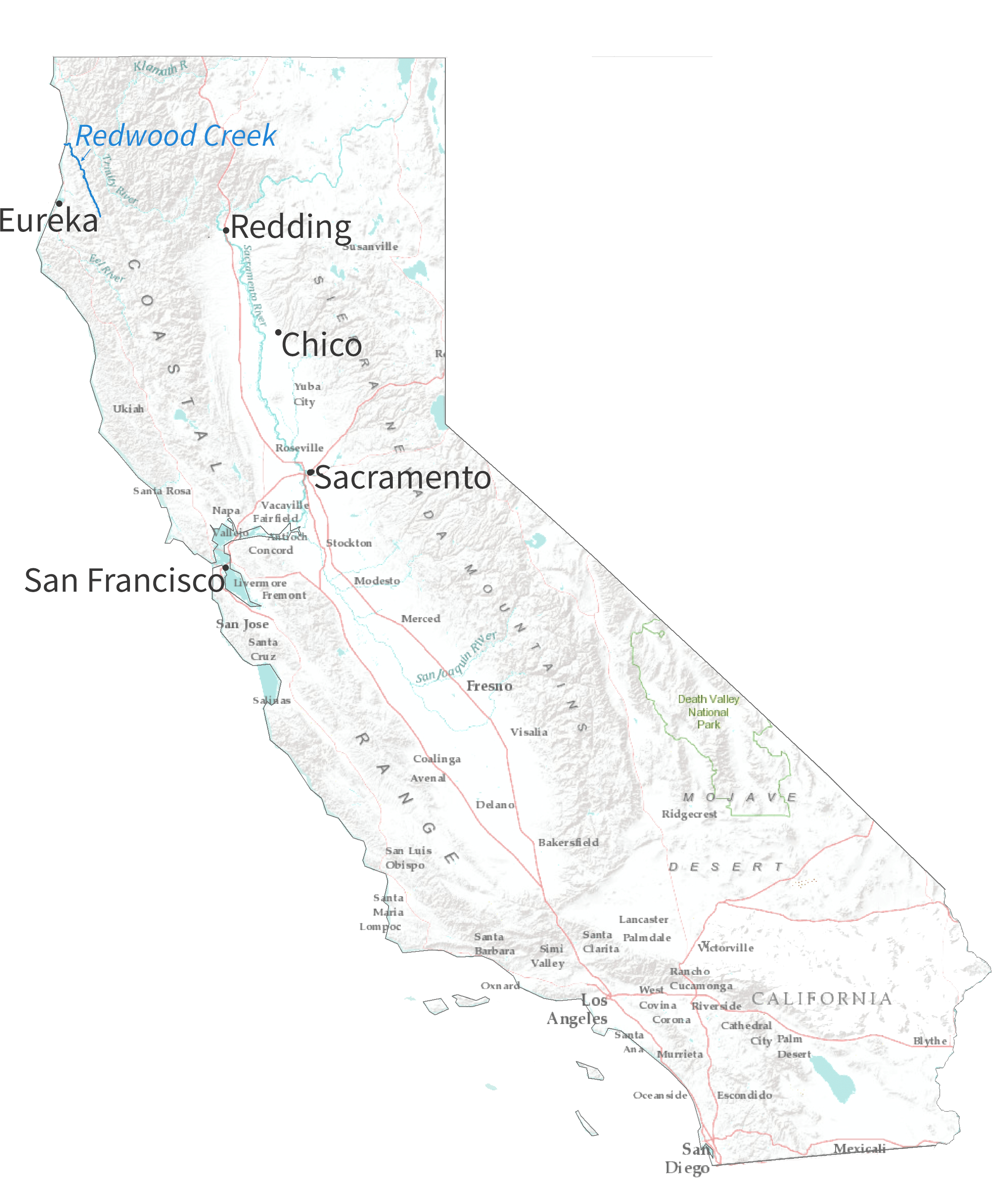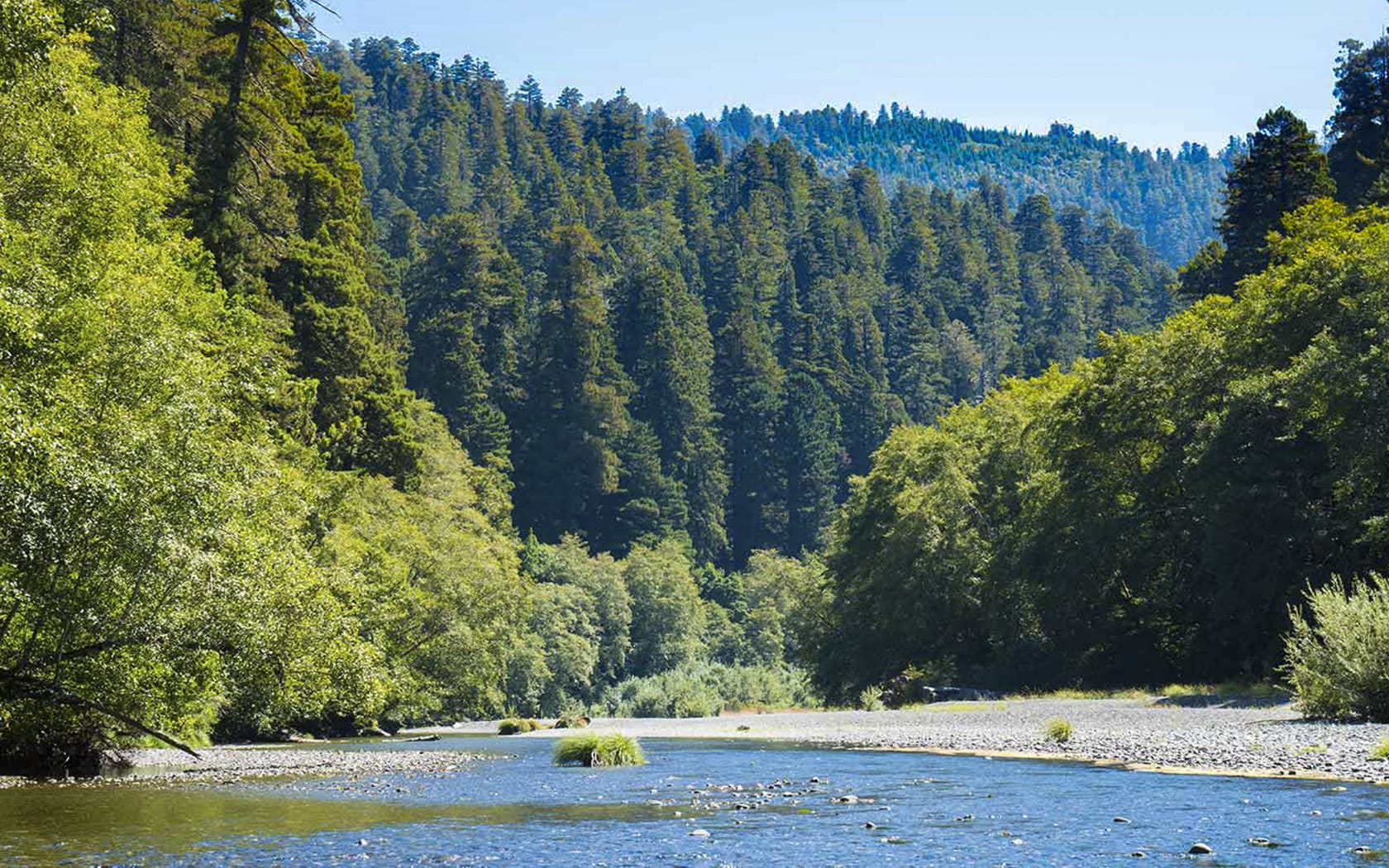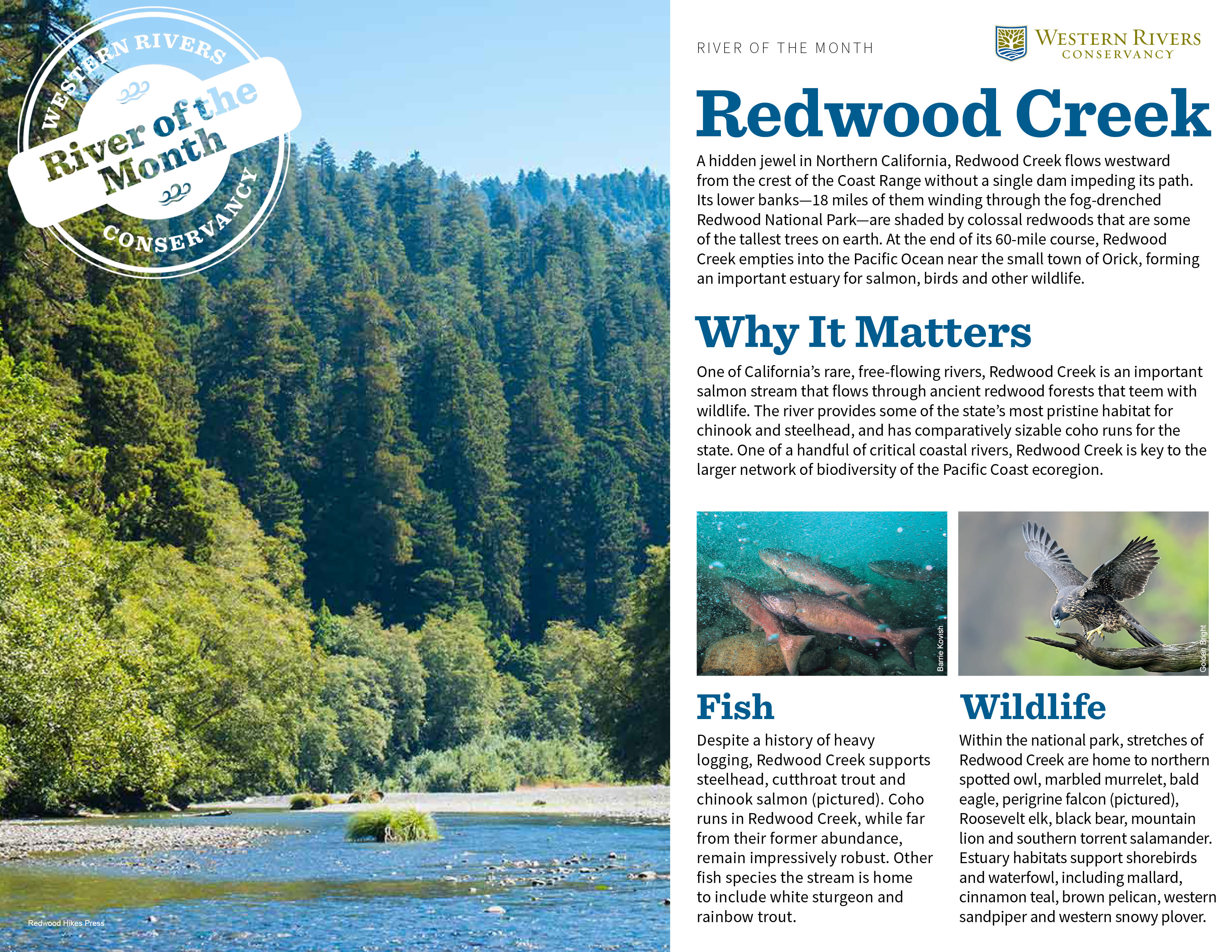
Fish
Like most streams of the Northern California coast, Redwood Creek supports Chinook (pictured) and coho salmon, steelhead and cutthroat trout. Coho returns, while far from their former abundance, remain relatively robust. The stream is also home to white sturgeon and resident rainbow trout.

Wildlife
Within the national park, stretches of Redwood Creek are home to northern spotted owl, marbled murrelet, bald eagle, peregrine falcon (pictured), Roosevelt elk, black bear, mountain lion and southern torrent salamander. Estuary habitats support shorebirds and waterfowl, including mallard, cinnamon teal, brown pelican, western sandpiper and western snowy plover.
-
Hike
Access the Redwood Creek Trail via Highway 101 and Bald Hills Road. At the trailhead, cross a small bridge and wander through dense forest and an open meadow where elk occasionally roam. Drop down to the gravelly bank of the stream and either turn back or cross another small bridge to continue on for a 17-mile round trip hike to the mighty Tall Trees Grove.
-
Sightsee
For excursions near Redwood Creek, start north of Orick at the mouth of the Klamath River, one of the West Coast’s greatest salmon strongholds. An emblem of the rugged NorCal coast, the Klamath empties into the Pacific Ocean in a remote and fog-cloaked expanse near the quiet hamlet of Requa. From there, venture south into the dense thicket of Fern Canyon in Prairie Creek Redwoods State Park, the prehistoric-looking hiking trail that served as a backdrop for scenes in Jurassic Park 2.
-
Birding
Redwood Creek plays host to an impressive array of bird life all year. In riparian forests, you’ll find yellow warbler, spotted sandpiper and common merganser. Along coastal reaches at the mouth of the stream, osprey, great egret, black-crowned night heron and the once-endangered brown pelican soar overhead. In winter months, the estuary is a hotspot for rare and unusual cold weather birds, like the Steller’s Eider, Iceland gull and tundra swan.
The WRC Story
Redwood Creek—with its 60-miles of free-flowing water, 30 percent of which are protected by the Redwood National Forest—has unique potential to be a pristine salmon habitat. In order to bolster broader restoration efforts, WRC set its focus on the critical Redwood Creek Estuary by conserving a 77-acre dairy farm near the mouth of the river. The project is listed as a top priority by the state of California because while the stream is dam-free, levees installed in the 1960s to protect the town of Orick from floods negatively impacted the estuary’s natural flow and function. In 2009, WRC conveyed the property to the Northcoast Regional Land Trust. That allowed state agencies to begin the crucial work of restoring tidal wetlands and estuary habitat, increasing the health of the entire watershed. The project was a tremendous benefit to the fish and wildlife that depend on this fragile stream, including Chinook and coho salmon, steelhead, shorebirds and waterfowl.


Best Time of Year
- Birding
- Year-round
- Sightseeing
- Year-round
- Hiking
- Jun-Sep
Go Deeper
-
Redwood Information Center Brochure
(National Park Service)
Learn More -
Everything to know about Redwood National and State Parks
(National Geographic)
Learn More -
Prairie Creek Redwoods State Park Overview
(Visit Redwoods)
Learn More


